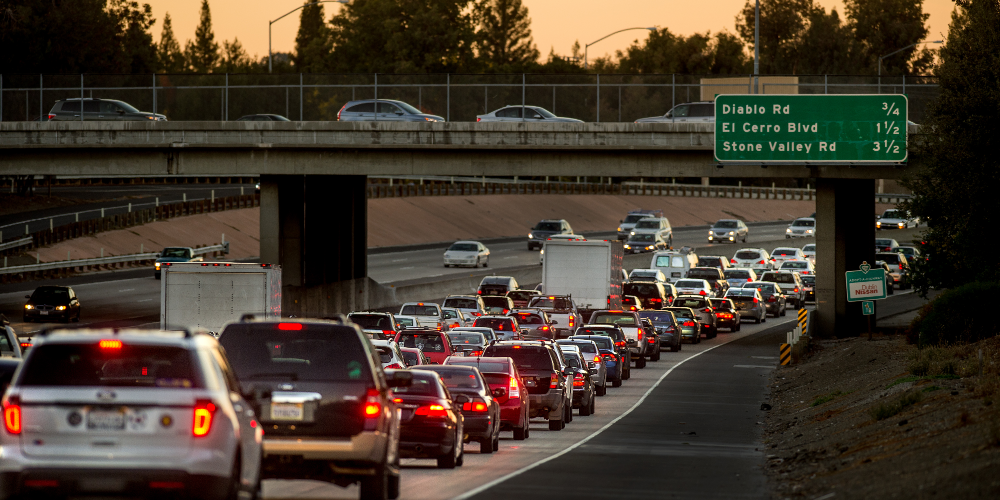
Here’s a question only a policy wonk could love: Should a performance target be achievable or aspirational? In other words, should it be based on current trends, or on desired outcomes? That question is at the heart of a position paper now circulating for review by MTC’s partners, stakeholders and the public.
The exercise to develop regional performance targets is a necessary step for receiving federal transportation funding. Metropolitan planning organizations like MTC must show how planned investments using those federal dollars will improve travel times, freight movement and economic vitality, system reliability, infrastructure conditions, environmental sustainability, and safety in their regions. At stake at the moment are three performance measures established by the Federal Highway Administration (FHWA) that apply to recipients of Congestion Mitigation and Air Quality Improvement Program funding, otherwise known as CMAQ. Brace yourself — the first two are pretty esoteric: annual hours of peak-hour excessive delay per capita (another way of saying traffic congestion); percent of non-single-occupancy-vehicle (SOV) travel (we'll explain that in a minute); and total emissions reductions from CMAQ-funded projects.
Recognizing that conditions vary from region to region, the FHWA is leaving it up to the states and regions to work together to determine reasonable performance targets for these categories. Easier said than done, however, as there’s a lot of science and data crunching that goes into those calculations, along with policy decisions as to how aggressively to pursue a particular goal.
Take the case of one measure, “percent of non-SOV travel for the San Francisco-Oakland Urbanized Area.” In this case, the higher the percentage, the better, as it translates to a greater share of trips taken in carpools and public transit, and by nonmotorized means, such as on bikes or by foot. Right now, 44.3 percent of commuters in the San Francisco-Oakland urbanized area travel by these alternative modes according to US Census data, while 24.5 percent of commuters in the San Jose urbanized area use such modes. Planners are looking at nudging up that share by 2 or 2.4 percentage points by 2022 for the central Bay Area. That may not sound like a lot, but it is when you consider that we're talking about millions of Bay Area commuters. And with insufficient housing being built in the most transit-rich parts of the region, it’s hard to get a dramatic modal shift in a short period of time.
One key question for the region is whether to be as ambitious for the South Bay as for the central portion of the region. "The real issue is do we set a more aggressive target for the core of region, which has seen more progress in recent years in shifting to alternative modes compared to the southern area, or do we set a 2 percentage point increase for both areas," said MTC Planner Dave Vautin.
MTC lays out the performance target options in a detailed technical memo that went to an advisory committee on March 30, 2018. The window for this public comment opportunity is short, due to state guidelines. MTC staff are looking for feedback and guidance from partner agencies, stakeholders and the public by April 17, 2018. Questions and comments about federal performance target-setting activities should be directed to Vautin at dvautin@bayareametro.gov.
In all, there are 29 categories of federal performance targets, so stay tuned for more regional performance target setting in the months ahead. Detailed performance monitoring data will be rolled out over the course of 2018 on the Vital Signs website, a joint project of MTC, ABAG, the Bay Area Air Quality Management District, the Bay Conservation and Development Commission, and the Bay Area Regional Collaborative.



Submit your comment
In order to receive a reply to your comment, please provide an email address.